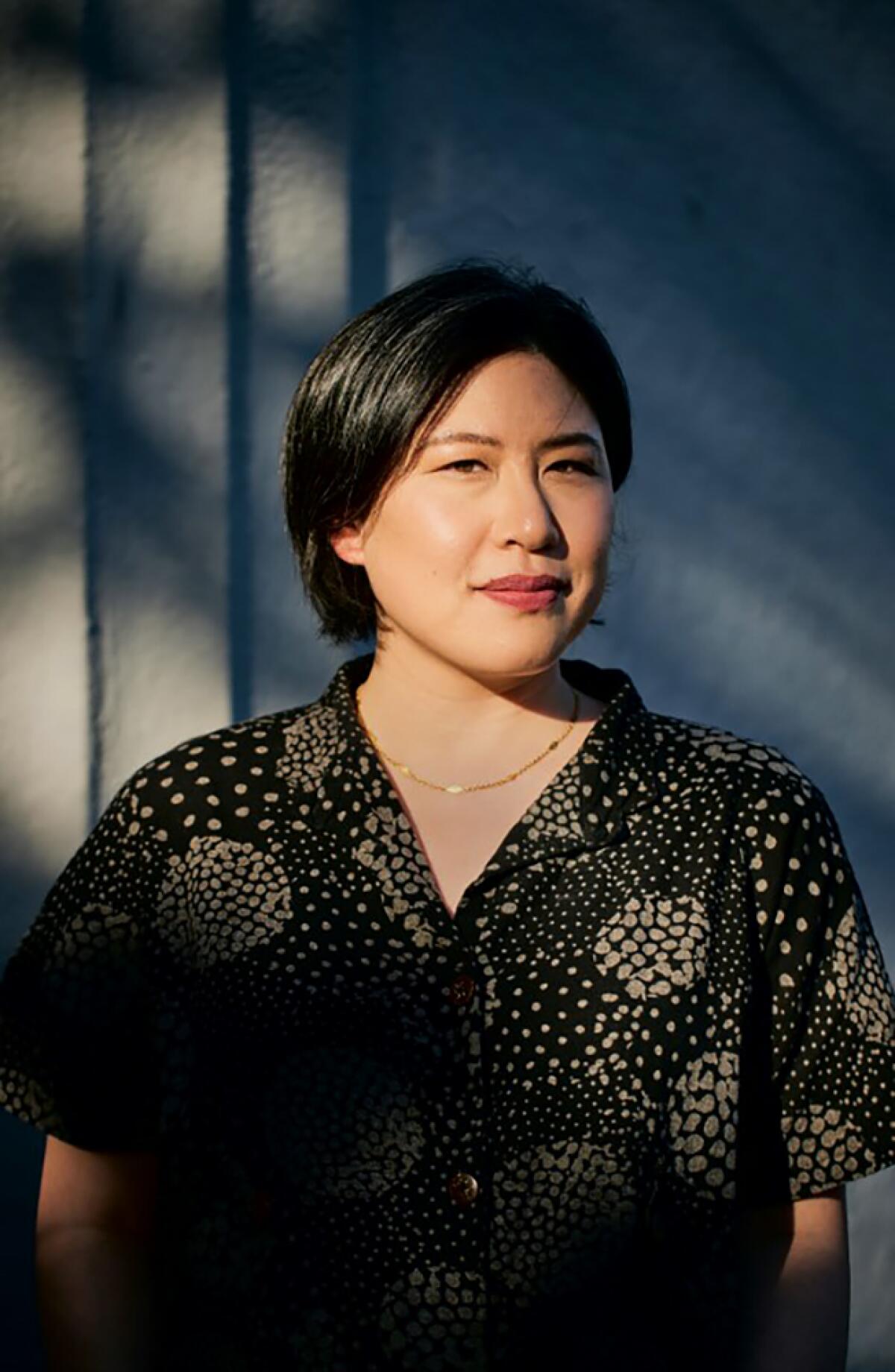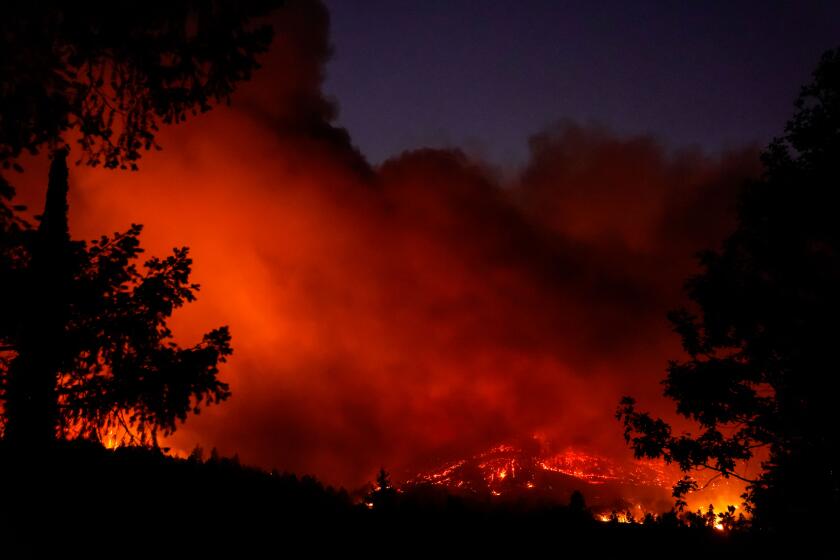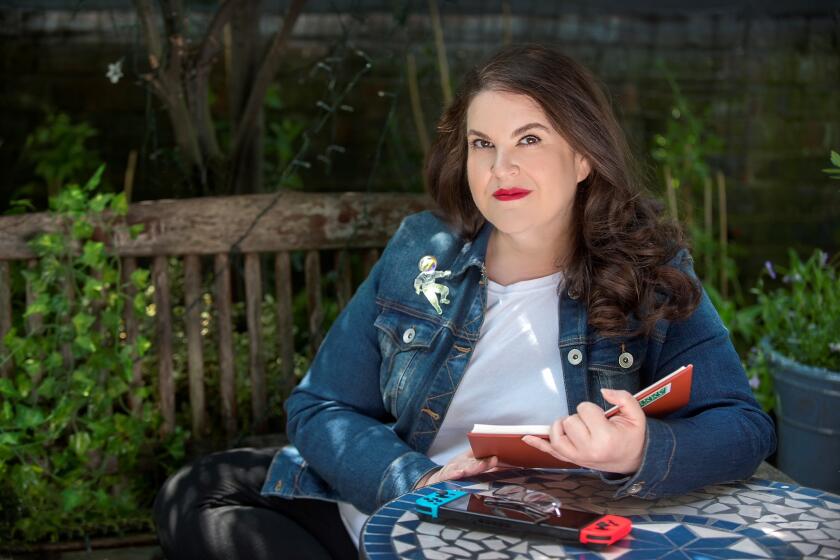‘Awake in the Floating City’ finds hope — and artistry — in a submerged San Francisco

- Share via
Book Review
Awake in the Floating City
By Susanna Kwan
Pantheon: 320 pages, $28
If you buy books linked on our site, The Times may earn a commission from Bookshop.org, whose fees support independent bookstores.
Bertolt Brecht wrote that, in the dark times, there will also be singing. In Susanna Kwan’s debut novel, she asks whether those songs may be sung if there are no choirs to sing them. Choirs require community, and the role of community during environmental disaster is one of the themes that runs through this thoughtful novel about art, creation and the ways we care for one another.
Bo is a 40ish woman living in a San Francisco high-rise in the mid-21st century. The city is underwater after being swamped by the rising Pacific Ocean and incessant rain. But the city continues to exist. Those who have not fled inhabit the upper floors of skyscraper apartment blocks. Bo’s cousins have lined up work opportunities for her in Canada, but when the novel begins, she is insistent on staying. What keeps her there is grief; two years before, her mother disappeared during a storm. Bo clings to the hope that one day she will be reunited with her.
Like Bo before the rains, Kwan is an artist and she conveys what goes missing in her character’s life after environmental disaster: In the perpetual rain there are no longer seasons. And without seasons, there are no holidays or festivals to mark the changes in the year. Bo marks time with her twice-weekly visit to the rooftop markets, where merchants sell food they’ve grown or had brought in by boat. But it’s also where she scans the bulletin boards filled with photos of the missing and lost in search of her mother.
‘Cli-fi’ is a growing genre as drought, blizzards, heat waves and wildfires reshape our lives. But it doesn’t have to be dystopian.
Kwan’s novel hones in on the ways that isolation and boredom sap vital parts of ourselves. The book captures America’s recent history: 2020 and isolating in our apartments and houses while outside, the dead piled up in freezer vans and mass graves. The ways that anxiety and loneliness caused many to turn inward, to make what was happening personal, as if no one else was affected. The loss of community and empathy for others drowned in the waves of fear, uncertainty, and for many, anger. Bo herself struggles with her individual feelings of frustration and grief, but then reminds herself that she hasn’t been singled out for bad fortune.

“What made her special in the long human history of crisis and displacement?” Bo wonders. “She had followed reports of heat waves that never subsided, outbreaks of anthrax and smallpox and malaria, continents dried to deserts, genocidal regimes, military blockades at borders that prevented passage to hundreds of thousands of people with nowhere to go, children drowning at sea. And yet the matter of her own privileged leaving felt extraordinary and without precedent, even as she registered this delusion.”
Before her mother disappeared, Bo worked constantly as an illustrator and painter, a source of joy that sustained her. But after her mom dies — and it is clear that her mother has most likely been washed out to sea — she is paralyzed. “Art, she’d come to feel, served no purpose in a time like this. It belonged to another world, one she’d left behind.” Grief has grayed-out her love for colorful creation.
One day, a neighbor slips a note under her door. It is a request that Bo come help out Mia with household chores. Mia lives alone, and at age 129, is struggling.
Bo has supported herself in the constricted economy as a caregiver. Many of those in the high-rises are the elderly, in some cases abandoned by their fleeing children, but sometimes just too fragile to be moved. By 2050, people are living past 100 and living to 130 isn’t rare. But 130-year-old elders have elderly children and even elderly grandchildren. Weaker bonds with third- and fourth-generation descendants has left many to look after themselves.
Naomi Alderman’s new dystopia, ‘The Future,’ finds a new way into the genre she mastered in ‘The Power’: a battle royal of preppers, tech billionaires and cults.
Bo is the daughter of Chinese immigrants; Mia came from China with her parents. Mia’s daughter and further descendants live thousands of miles away. Caring for Mia reminds Bo of the time she spent with her mother when they made frequent treks to check in on family elders, a way of paying respect, her mom told her when Bo was a child.
In Mia’s apartment, the two women begin to bond in the kitchen. Bo prepares food while Mia tells stories of her life in San Francisco. She had been born in the 1920s, not that long after the earthquake and devastating fire that leveled the city in 1906. Mia’s life parallels the growth of San Francisco and her memories of how the city changed through the decades in the 20th century intrigues Bo. So much was lost, first in the wave of explosive population growth and wealth, but when the rains came, entire parts of the city disappeared, their histories swallowed by the relentless rise of the Pacific.
Bo’s memories have already been dulled by perpetual grayness. But hanging out with Mia loosens something inside of Bo, and she notices that her senses can serve as “time machines,” and give her access to her own past. There are obvious reminders — a photograph — but songs are especially evocative even before she recognizes the tune. “A song provided passage from the present station back to a place and time, distinct and palpable. The trip was quick, a sled tearing down a luge track, the body sensing its arrival before the mind could register the journey.”
Bo’s occasional lover is a man who visits San Francisco as part of his job working in natural resources. He spends much of the time counting and cataloging what species remain, or what is about to be lost. When he arrives back in town after she has started working for Mia, Bo finds that her growing sense of purpose, her desire to return to art-making, is motivated by a similar impulse.
She wants to catalog Mia’s experiences, her memories of the city that no longer exists. In their long conversations, Mia summons images and histories of places that Bo never knew existed. Inspired by Mia, Bo goes to the city’s archive and searches for the photographs, newspaper articles, blueprints, maps and other ways that the now-missing city documented its existence.
For Mia’s approaching 130th birthday, which Bo senses will be her employer’s last, she decides that she will use her skills as an artist to bring the old city back to life one more time — a gift for her employer, but also a means by which Bo can recapture the wild energy that is creation.
Survivalists preparing for an imagined catastrophic future hoard food and supplies and stock up on guns to “protect” themselves from those in need. But as Kwan shows, such visions of the future are the refractions of nihilism and the American belief that individual survival and success is due solely to individual effort. But that’s never been the case. What preserves human life — even a life in horrific circumstances — are relationships of caring and cooperation. Community built on taking care of each other is the only way that we will thrive. The networks we build to support others eventually becomes the social safety net we will ourselves need.
In dark times, the songs that will comfort us will not be the cacophony of individual voices wailing their grief. The darkness will be lifted by the harmonies of those who recognize each other’s humanity.
Berry is a writer and critic living in Oregon.
More to Read
Sign up for our Book Club newsletter
Get the latest news, events and more from the Los Angeles Times Book Club, and help us get L.A. reading and talking.
You may occasionally receive promotional content from the Los Angeles Times.












